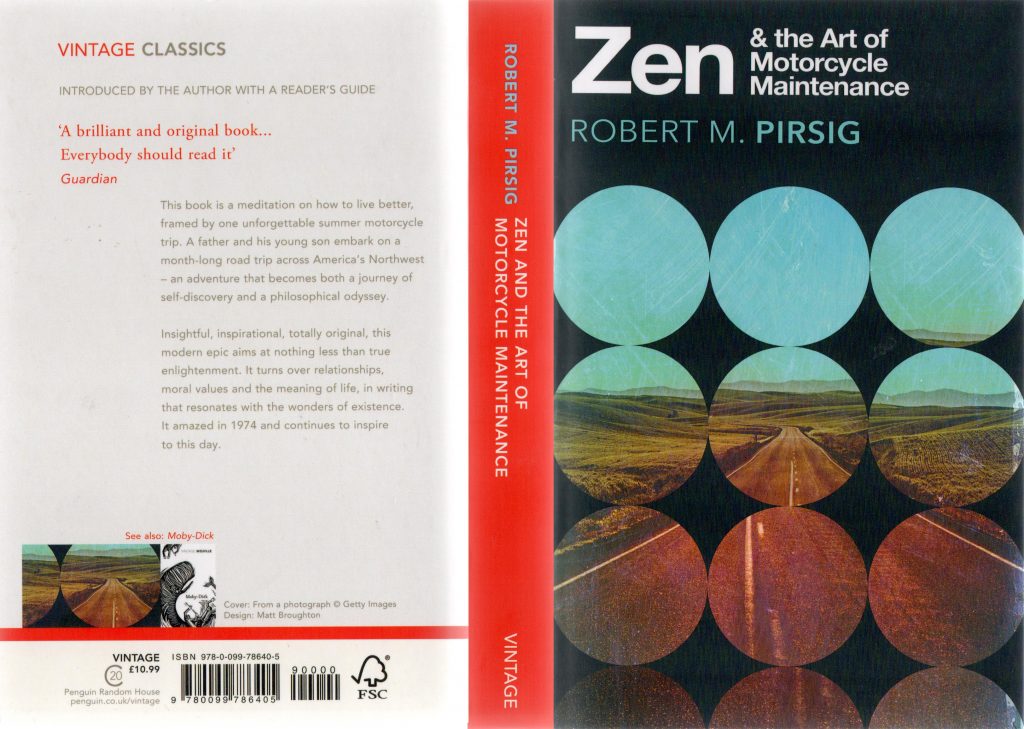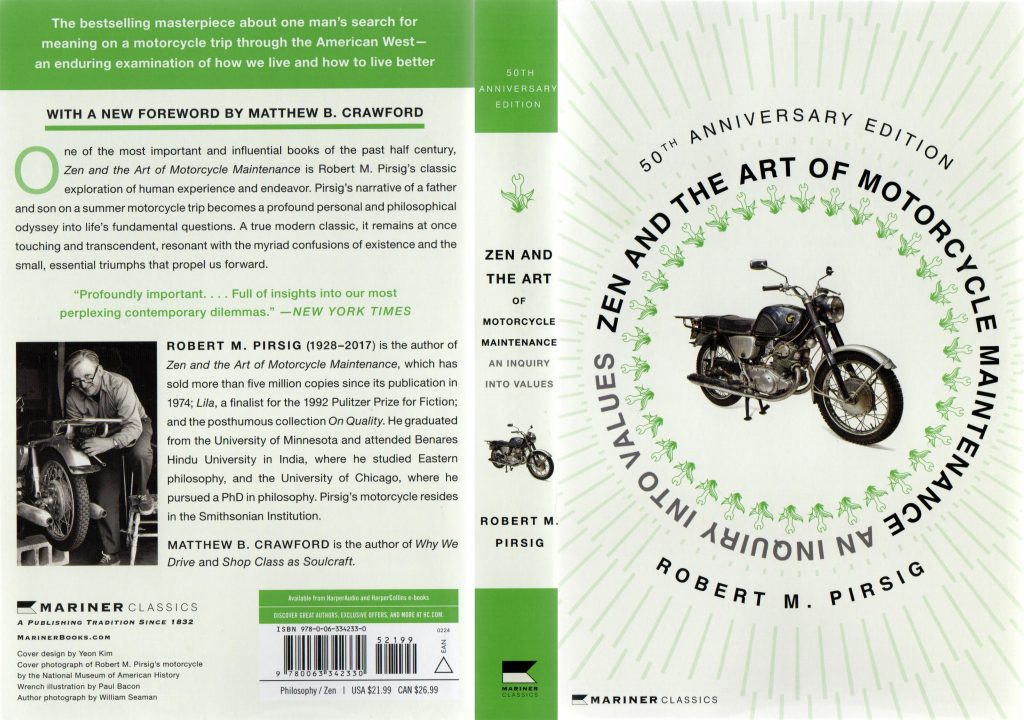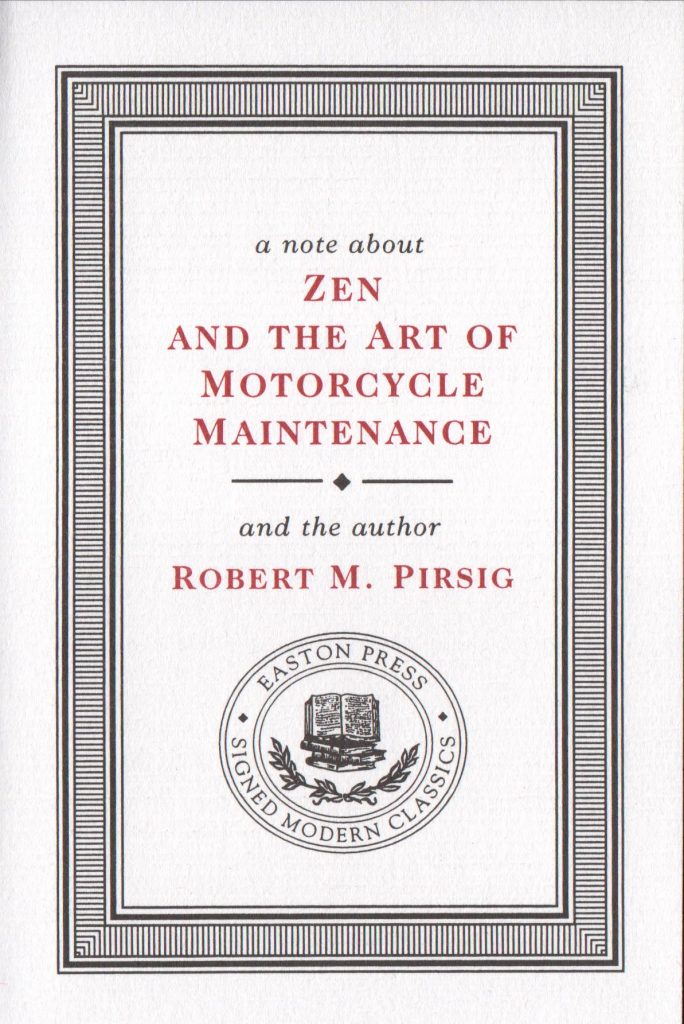It has been an amazing night at Mt John, Lake Tekapo. The sunstorm arrived and filled the sky with an Aurora Australis. I uploaded more pictures to my Flickr.

University of Canterbury, New Zealand
It has been an amazing night at Mt John, Lake Tekapo. The sunstorm arrived and filled the sky with an Aurora Australis. I uploaded more pictures to my Flickr.

We have started a search for all non-English editions of Robert Pirsig’s books. That is:
The process is as follows:
We are interested in all editions. Meaning that a certain publisher might have released multiple editions over the years. Each edition should be added. In 2024, for example, two new English editions were published.
Editions show significant differences in terms of design and content. An edition might, for example, feature a new cover and foreword. In most cases, a new edition also has a new International Standard Book Number (ISBN), but this is not always the case. The original 1974 edition of Zen and the Art of Motorcycle Maintenance, for example, shares its ISBN number with its 25th anniversary edition published in 1999.
Please add as much information as you can. It will help us to find an catalog them.
It has been 50 years since the first edition of Zen And The Art Of Motorcycle Maintenance was published. I previously published a whole paper on the cover designs. Harper Collins in the US and Penguin Random House in the UK just published new editions. The UK edition is just a re-release with no new material.

The US edition has a new forward by Matthew B. Crawford. The interior also has a completely new layout. The cover itself features a photograph of Pirsig’s original Honda Super Hawk, which has been restored and brought to the Smithsonian (National Museum of American History).

Thanks to a kind donation from Ian Glendinning, I can now share more photos of the Easton Press edition. It is an amazingly beautiful book that includes a certificate of authenticity, a note on the author, and the authors’ signature.






In 1993, the German city of Wemding celebrated its 1200 anniversary.
They decided to start a long-term art project. Every decade, they would place a concrete block on a base. After adding 120 blocks, the pyramid would be complete.
The only problem is that the pyramid will be completed in the year 3183. Which is only 1190 in the future. Not 1200. The project made a basic mathematical error, called the picket fence error. For a picket fence of n elements, you need to have n+1 posts.
Instead of waiting for the first decade to complete before placing the first block, they started immediately. This is like putting the first candle on the birthday cake on your child’s actual day of birth.
Matt Parker pointed out this error during his visit to the placement of the fourth block in 2023. He also proposed an alternative design that would take 121 blocks to complete. Unfortunately, his design is not a pyramid and would be 19.8 meters tall. That is certainly not safe in a storm.
zeitpyramide-matt-parker-121-blocksThere must be a better design. I took 121 of my beloved LEGO bricks and started on a seven-by-seven base. After some experimentation, I came up with a beautiful pyramid that is only one block taller than the original design. It is still a proper pyramid with complete symmetry.
zeitpyramide-bartneck-121-blocksWe can only speculate what Manfred Laber, the artist, had in mind. According to Barbara Schlecht, head of the Zeitpyramide trust, Mr. Laber was fully aware of the consequences of his design. It is certainly much easier to design a sculpture with 120 bricks since it is divisible by 1, 2, 3, 4, 5, 6, 8, 10, 12, 15, 20, 24, 30, 40, 60 and 120. 121, on the other hand, is only divisible by 1,11 and 121.
When public projects make glaring mistakes, they invite schadenfreude. We can speculate that Manfred Laber decided to sacrifice the opportunity to set a block at the beginning and at the end of the 1200 years period for having a direct relationship between the 120 blocks and the 1200 years.
There are alternative pyramid design for 121 blocks. He could have also decided to only place the foundation in 1993. In any case, this art project has become famous not for its original concepts, but for the controversy around its maths. Which is unlikely to have been the intention of the artist.
In October 2023 I had the privilege to talk at the Nerd Night in Christchurch. This event series operates at the intersection of comedy, popular culture and science. I talked about my adventures in exploring the peer review process. Some of them to the annoyance of my fellow scientists, conference organizers and predatory publishers. But always with a nod to comic effect and a focus on the overcompetitive beast we call academia.
I also published this event on the HRI Podcast.